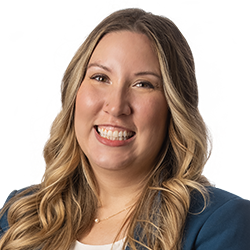Small Business Covid-19 Primer
Covid-19 has caused stress for both business owners and employees. In the past days, I’ve fielded calls from clients who need a general legal lay of the land before asking more specific questions.
Two new benefits are in effect from April 1, 2020 through December 31, 2020: emergency paid sick leave (EPSL) and paid FMLA leave (FMLA+). Both were part of the Families First Coronavirus Response Act. There is a flyer to post starting April 1, 2020, available to print on the DOL website here.
An employee is entitled to FMLRA+ or EPSL leave if he/she is:
- subject to a Federal, State, or local quarantine or isolation order related to COVID-19;
- advised by a health care provider to self-quarantine due to concerns related to COVID-19;
- experiencing symptoms of COVID-19 and seeking a medical diagnosis;
- caring for an individual who either is subject to a quarantine or isolation order related to COVID-19 or has been advised by a health care provider to self-quarantine due to concerns related to COVID-19;
- caring for a child whose school or daycare is closed due to COVID-19; or
- experiencing any other substantially similar condition specified by the Secretary of Health and Human Services.
Generally, an employer with 50-499 employees must provide:
- 2 weeks of 100% paid leave (for reasons 1-3),
- 2 weeks of 2/3 paid leave (for reasons 4, 6)
- 10 weeks of 2/3 paid leave (for reason 5).
- 12 weeks of total leave.
None of this leave applies during this government mandated shutdown or for as long as the business is closed due to lack of business. None of this applies if the business has employees work reduced hours. Employees whose hours have been reduced may be entitled to file for unemployment benefits, and the employer must tell the employee he/she is entitled to unemployment.
There are additional benefits for the employer as well.
The Paycheck Protection Program is a new SBA loan/grant program, which has a maximum loan amount of 2.5 times your average monthly payroll. It is forgiven if the employer can document that all loan proceeds were used in the 8 weeks after receiving the loan for payroll, rent, utilities, and healthcare expenses. The employer must keep the average payroll and average number of employees, or the loan must be repaid. For example, if you reduce payroll by 25%, then 25% of the loan must be repaid.
If the employer rehires employees that were previously laid off at the beginning of the period, or restores any decreases in wage or salary that were made at the beginning of the period, the employer will not be penalized for having a reduction in employees or wages, as long as this has been done by June 30, 2020. The SBA has not finalized its regulations on the forgiveness. The Treasury Secretary announced the SBA will have a plan in place by Friday April 3, 2020.
Employers may also apply for an SBA disaster relief loan with a $10,000 advance option (once the SBA updates its forms). Keep in mind, the employer can't list the same expenses on the Paycheck Protection Program and the Disaster Relief Loan--so if you apply for disaster relief for payroll, you can't later get a Paycheck Protection Program loan for payroll.
Finally, there is a new Kansas City-area small business relief loan fund, maxing out at a $100,000 loan for businesses with fewer than 20 full-time employees and $2.5 million or less in annual revenue that are located in Jackson, Clay, Platte, or Cass counties in Missouri or Wyandotte, Johnson, or Leavenworth counties in Kansas. Businesses may apply here.
Finally, if the employer must pay FMLA+ or EPSL benefits, the employer will receive a tax credit against payroll taxes. The credit is also refundable. KPMG created a good bulletin on the specifics, which you can view here.
Provided certain conditions are met, businesses with fewer than 50 employees can exempt themselves from paying benefits for reason 5--when a worker is staying home to care for a child, because the school/daycare is closed. You may claim this exemption if an authorized officer of the business has determined that:
- The provision of paid sick leave or expanded family and medical leave would result in financial obligations exceeding available business revenues and cause you to cease operating at a minimal capacity;
- The absence of the employee or employees requesting paid sick leave or expanded family and medical leave would entail a substantial risk to the financial health or operational capabilities of the small business because of their specialized skills, knowledge of the business, or responsibilities; or
- There are not sufficient workers who are able, willing, and qualified to work as needed for the small business to operate at a minimal capacity.
There is no exemption for reasons 1, 2, 3, 4, and 6, above --if one of your workers is actually sick, quarantined, or caring for a person in quarantine.
Finally, businesses in Kansas should keep in mind that their local disaster relief declaration has been superseded by the Kansas Governor’s Executive Order 20-16, which took effect March 30, 2020 and expires April 19, 2020.
related services

Missouri Supreme Court establishes elements of a claim for aiding and abetting discrimination, and more ...

NLRB Lacked Substantial Evidence to Find Unfair Labor Practice, Eighth Circuit Finds ...
About Employment & Labor Law Blog
Baker Sterchi's Employment & Labor Law Blog examines topics and developments of interest to employers, Human Resources professionals, and others with an interest in recent legal developments concerning the workplace. This blog is focused on Missouri, Illinois and Kansas law, and on major developments under federal law, and at the EEOC and NLRB. Learn more about the editor, David M. Eisenberg, and our Employment & Labor practice.
Subscribe via email
Subscribe to rss feeds
RSS FeedsABOUT baker sterchi blogs
Baker Sterchi Cowden & Rice LLC (Baker Sterchi) publishes this website as a service to our clients, colleagues and others, for informational purposes only. These materials are not intended to create an attorney-client relationship, and are not a substitute for sound legal advice. You should not base any action or lack of action on any information included in our website, without first seeking appropriate legal or other professional advice. If you contact us through our website or via email, no attorney-client relationship is created, and no confidential information should be transmitted. Communication with Baker Sterchi by e-mail or other transmissions over the Internet may not be secure, and you should not send confidential electronic messages that are not adequately encrypted.
The hiring of an attorney is an important decision, which should not be based solely on information appearing on our website. To the extent our website has provided links to other Internet resources, those links are not under our control, and we are not responsible for their content. We do our best to provide you current, accurate information; however, we cannot guarantee that this information is the most current, correct or complete. In addition, you should not take this information as a promise or indication of future results.
Disclaimer
The Employment & Labor Law Blog is made available by Baker Sterchi Cowden & Rice LLC for educational purposes only as well as to give you general information and a general understanding of the law, not to provide specific legal advice. Your use of this blog site alone creates no attorney client relationship between you and the firm.
Confidential information
Do not include confidential information in comments or other feedback or messages related to the Employment & Labor Law Blog, as these are neither confidential nor secure methods of communicating with attorneys. The Employment & Labor Law Blog should not be used as a substitute for competent legal advice from a licensed professional attorney in your state.











